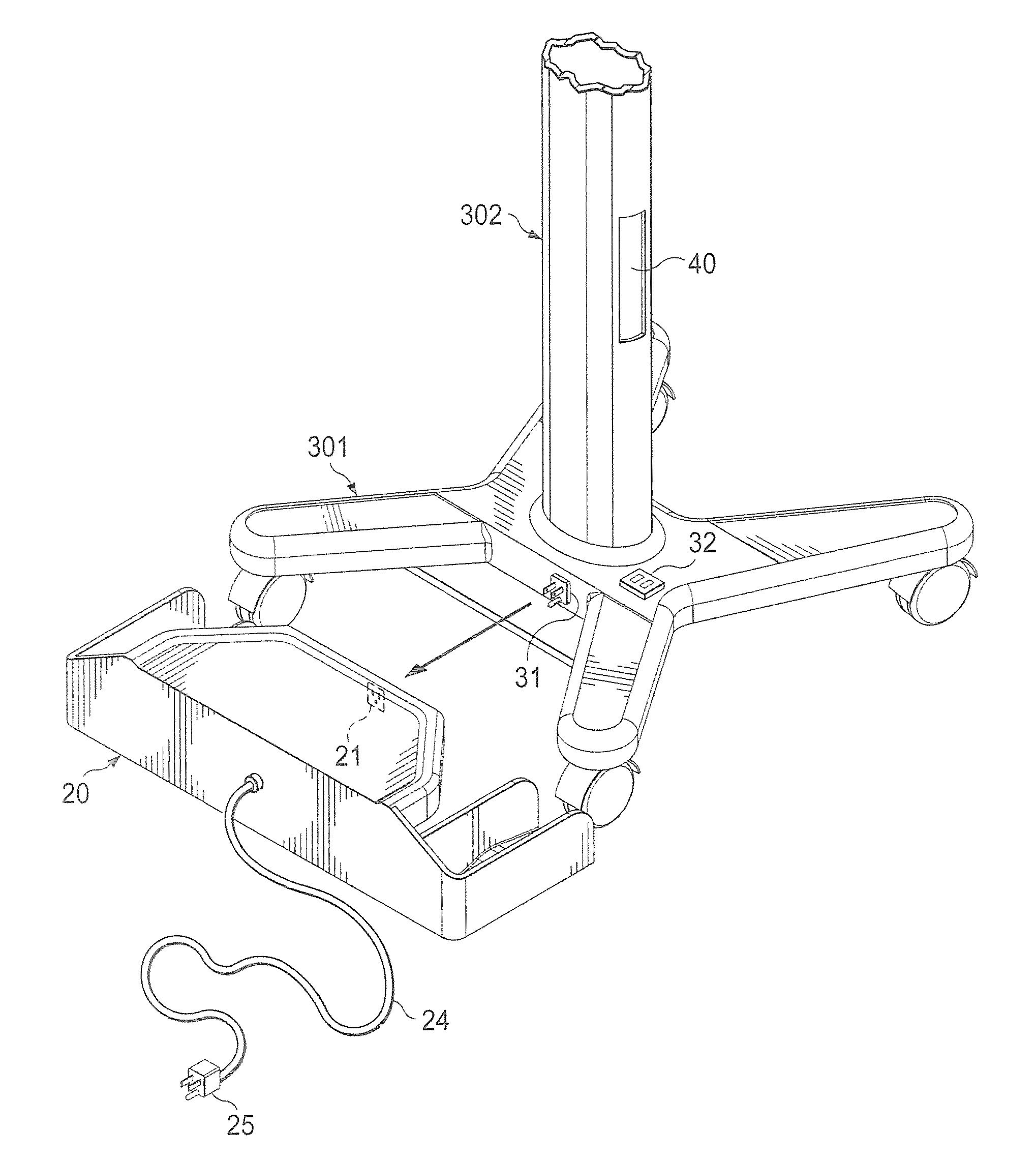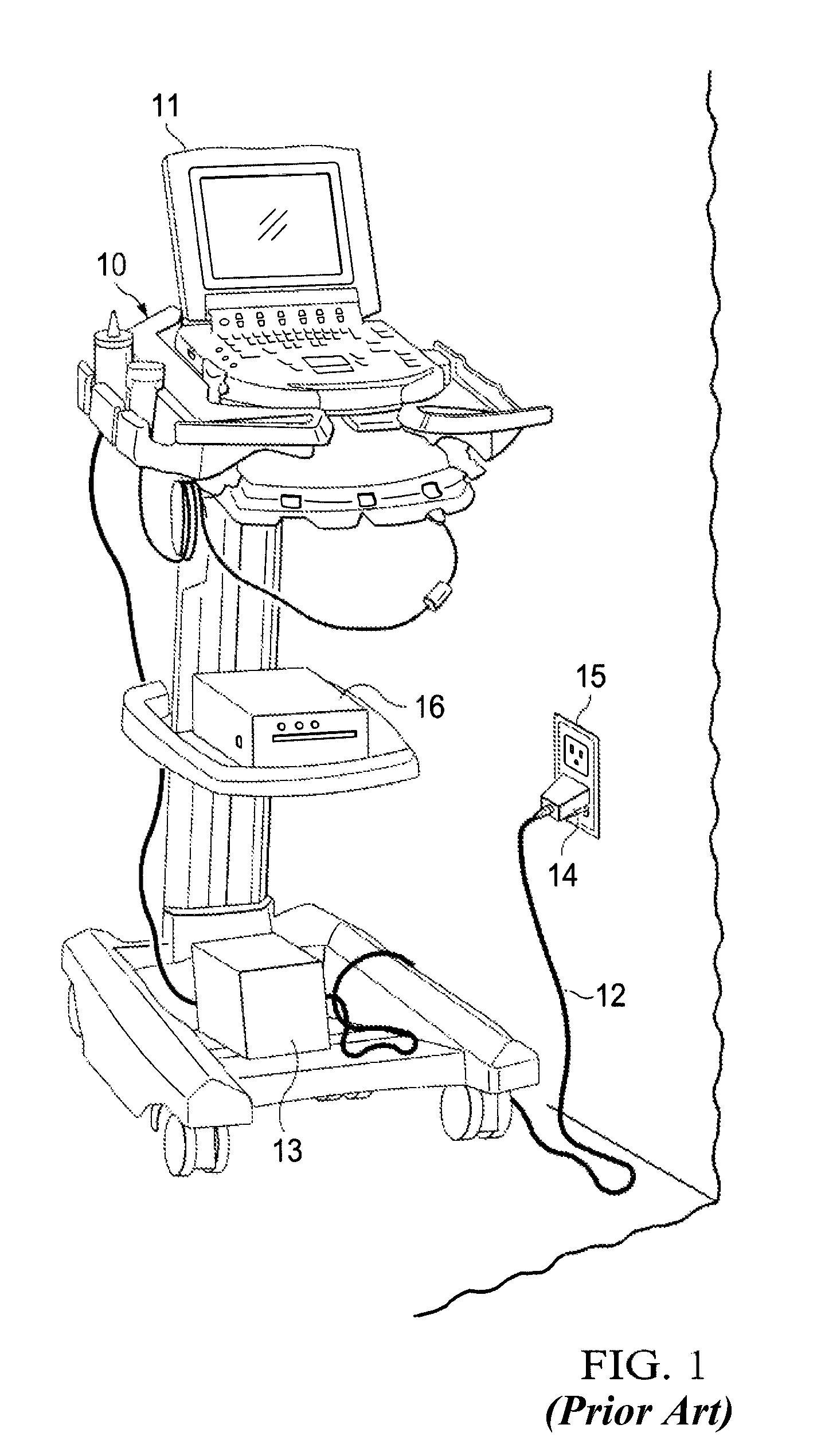Charging station for cordless ultrasound cart
a charging station and ultrasound cart technology, applied in the direction of electrical apparatus casings/cabinets/drawers, coupling device connections, instruments, etc., can solve the problems of affecting the use of ultrasound carts, containing cords, and general nuisance, and achieve the effect of facilitating their us
- Summary
- Abstract
- Description
- Claims
- Application Information
AI Technical Summary
Benefits of technology
Problems solved by technology
Method used
Image
Examples
Embodiment Construction
[0025]FIG. 1 shows a typical prior art medical cart 10 of the type used for sonography equipment, such as device 11. The ultrasound system could have an internal battery (not shown). Note that in this case the ultrasound cart does not have a battery but it does have power outlet 13 connected to long cord 12. The cord has plug end 14 which is adapted to plug into a wall outlet, such as wall outlet 15 to provide power to the system. Auxiliary equipment 16 is plugged into outlet box 13. This could be, for example, a printer, a video recorder, a VCR or any other type of equipment, all of which receive power from the cart, via the premises power outlet. As discussed above, when the power plug is removed from the wall outlet none of the auxiliary equipment can operate unless it has internal battery power.
[0026]In operation, when it is desired to move the cart to a patient location the cord is unplugged and wrapped around the cart, or onto a reel, or most often, held in the hand of the car...
PUM
 Login to View More
Login to View More Abstract
Description
Claims
Application Information
 Login to View More
Login to View More - R&D
- Intellectual Property
- Life Sciences
- Materials
- Tech Scout
- Unparalleled Data Quality
- Higher Quality Content
- 60% Fewer Hallucinations
Browse by: Latest US Patents, China's latest patents, Technical Efficacy Thesaurus, Application Domain, Technology Topic, Popular Technical Reports.
© 2025 PatSnap. All rights reserved.Legal|Privacy policy|Modern Slavery Act Transparency Statement|Sitemap|About US| Contact US: help@patsnap.com



